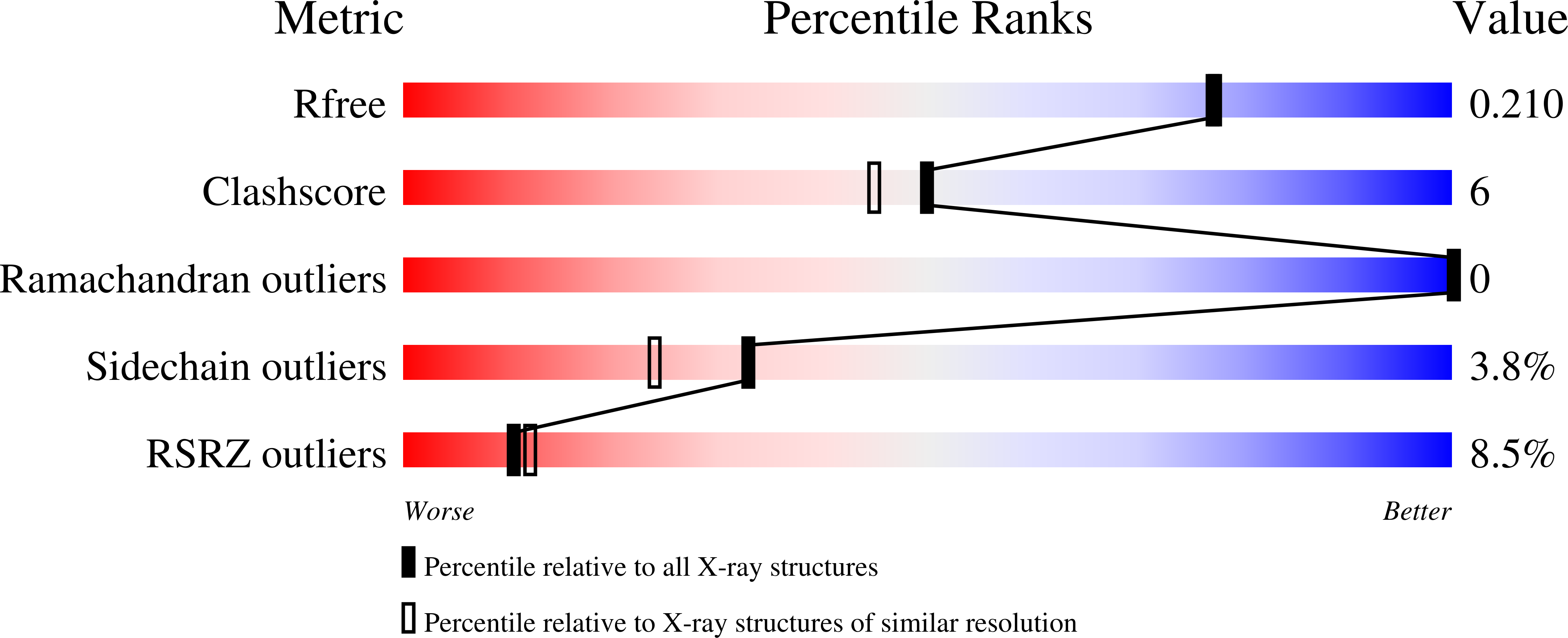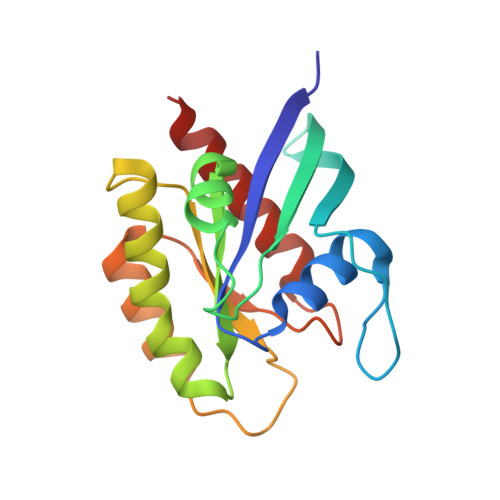GTP hydrolysis is modulated by Arg34 in the RASopathy-associated KRASP34R.
Bera, A.K., Lu, J., Lu, C., Li, L., Gondi, S., Yan, W., Nelson, A., Zhang, G., Westover, K.D.(2020) Birth Defects Res 112: 708-717
- PubMed: 32187889
- DOI: https://doi.org/10.1002/bdr2.1647
- Primary Citation of Related Structures:
6MS9, 6MTA, 6O36, 6O46 - PubMed Abstract:
RAS proteins are commonly mutated in cancerous tumors, but germline RAS mutations are also found in RASopathy syndromes such as Noonan syndrome (NS) and cardiofaciocutaneous (CFC) syndrome. Activating RAS mutations can be subclassified based on their activating mechanisms. Understanding the structural basis for these mechanisms may provide clues for how to manage associated health conditions. We determined high-resolution X-ray structures of the RASopathy mutant KRAS P34R seen in NS and CFCS. GTP and GDP-bound KRAS P34R crystallized in multiple forms, with each lattice consisting of multiple protein conformations. In all GTP-bound conformations, the switch regions are not compatible with GAP binding, suggesting a structural mechanism for the GAP insensitivity of this RAS mutant. However, GTP-bound conformations are compatible with intrinsic nucleotide hydrolysis, including one that places R34 in a position analogous to the GAP arginine finger or intrinsic arginine finger found in heterotrimeric G proteins, which may support intrinsic GTP hydrolysis. We also note that the affinity between KRAS P34R and RAF-RBD is decreased, suggesting another possible mechanism for dampening of RAS signaling. These results may provide a foothold for development of new mutation-specific strategies to address KRAS P34R -driven diseases.
Organizational Affiliation:
Department of Biochemistry and Radiation Oncology, The University of Texas Southwestern Medical Center at Dallas, Dallas, Texas.

















